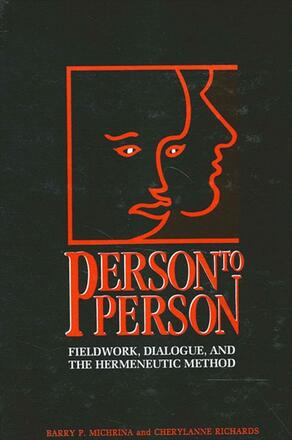
Person to Person
Fieldwork, Dialogue, and the Hermeneutic Method
Alternative formats available from:
Guides students through the step-by-step procedure of qualitative social research using the dialogical hermeneutic method of analysis.
Description
The first undergraduate guide to qualitative ethnographic fieldwork, this book describes a step-by-step procedure called the dialogical hermeneutic method of analysis, including its philosophical basis, practical application, and ethical implications. The authors delineate the characteristics of the scientific and humanistic paradigms in the social sciences and emphasize that the hermeneutic method is employed in the humanistic paradigm. They discuss topics often missing from fieldwork manuals, such as journal keeping, personal and interpersonal relationships, ethics, and writing the ethnographic essay.
Barry P. Michrina is Associate Professor of Anthropology at Mesa State College and Editor of the journal Anthropology of Consciousness. CherylAnne Richards is Program Specialist at the Resource Center in Grand Junction, Colorado.
Reviews
"The exercises at the end of each chapter challenge the reader and also provide step-by-step guidance into the intricasies of field work. The questions of 'challenge' and 'horizons of understanding' are highly original in the rethinking of observer bias. The text is practical and constructive as it progresses through the epistemological minefield of field work.
"An important reader in methodology for anthropology's postmodern phase, Person to Person represents a watershed and will ignite a great deal of debate. Many anthropologists will recognize much of what they struggle with. My congratulations for producing a fascinating and worthwhile text. " — Ian Prattis, Carleton University, Ottawa
"The authors make hermeneutics intelligible to undergraduates—and to some faculty who will want a basic discussion but will never admit they got it from an elementary source. They evoke an enthusiasm for undertaking ethnographic field work, for learning from 'the cultural other,' and a healthy confidence that the undergraduate student can learn something significant in a manageable time frame. " — Van A. Reidhead, University of Missouri, St. Louis